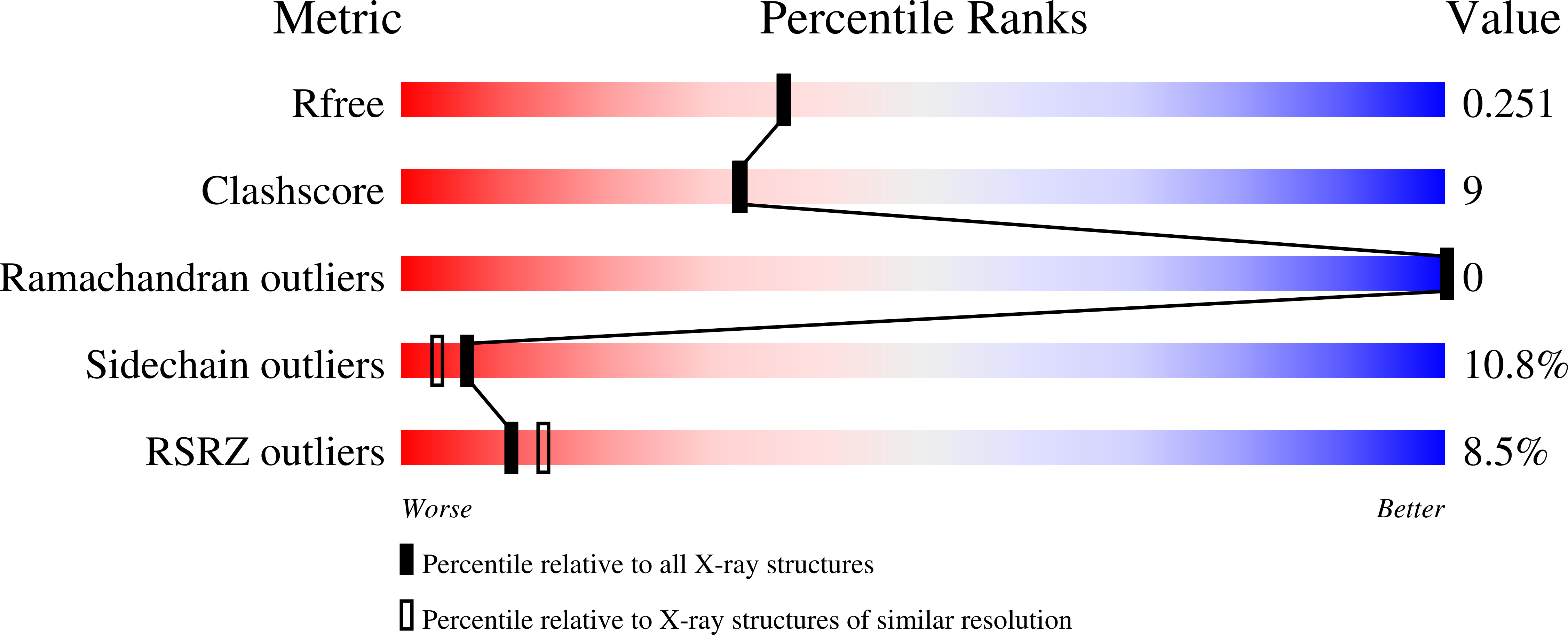Structural characterization of HIV gp41 with the membrane-proximal external region
Shi, W., Bohon, J., Han, D.P., Habte, H., Qin, Y., Cho, M.W., Chance, M.R.(2010) J Biol Chem 285: 24290-24298
- PubMed: 20525690
- DOI: https://doi.org/10.1074/jbc.M110.111351
- Primary Citation of Related Structures:
3K9A - PubMed Abstract:
Human immunodeficiency virus, type 1 (HIV-1) envelope glycoprotein (gp120/gp41) plays a critical role in virus infection and pathogenesis. Three of the six monoclonal antibodies considered to have broadly neutralizing activities (2F5, 4E10, and Z13e1) bind to the membrane-proximal external region (MPER) of gp41. This makes the MPER a desirable template for developing immunogens that can elicit antibodies with properties similar to these monoclonal antibodies, with a long term goal of developing antigens that could serve as novel HIV vaccines. In order to provide a structural basis for rational antigen design, an MPER construct, HR1-54Q, was generated for x-ray crystallographic and x-ray footprinting studies to provide both high resolution atomic coordinates and verification of the solution state of the antigen, respectively. The crystal structure of HR1-54Q reveals a trimeric, coiled-coil six-helical bundle, which probably represents a postfusion form of gp41. The MPER portion extends from HR2 in continuation of a slightly bent long helix and is relatively flexible. The structures observed for the 2F5 and 4E10 epitopes agree well with existing structural data, and enzyme-linked immunosorbent assays indicate that the antigen binds well to antibodies that recognize the above epitopes. Hydroxyl radical-mediated protein footprinting of the antigen in solution reveals specifically protected and accessible regions consistent with the predictions based on the trimeric structure from the crystallographic data. Overall, the HR1-54Q antigen, as characterized by crystallography and footprinting, represents a postfusion, trimeric form of HIV gp41, and its structure provides a rational basis for gp41 antigen design suitable for HIV vaccine development.
Organizational Affiliation:
Center for Synchrotron Biosciences, Case Western Reserve University, Cleveland, OH 44106, USA. wushi@bnl.gov














